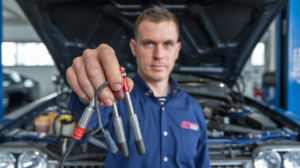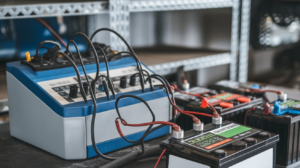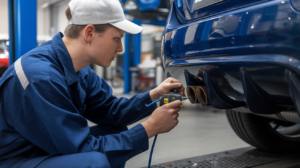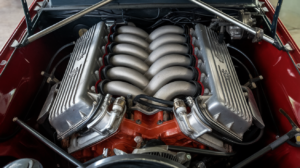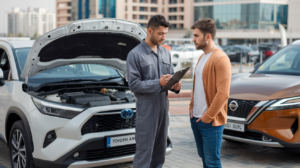That low-mileage SUV at the auction? Looks perfect. But under the hood or behind the paperwork, there could be a mess waiting to happen. Auction cars often come with hidden damage. Why? Because auctions move fast, and sellers know how to mask problems. Rolled-back odometers, washed titles, missing service records, it is all too common. And once you own it, those issues hit hard. Poor performance, safety risks, and resale value that tanks the moment someone checks the VIN.
In Dubai’s second-hand market, this is a real threat. The only real defense? A used car inspection. Not just a quick look, but a deep dive into the car’s history, condition, and integrity. Whether you’re buying or scouting, a proper used car inspection can save you thousands and a lot of regret. Let’s get into how to spot the fakes before they become your headache.
Why Auction Cars Are Vulnerable to Fraud?
Auction cars are risky. Not because every seller is dishonest, but because the system makes it easy to hide the truth. Here’s why:
- Fast turnover, zero transparency: Cars move quickly. You get a few photos, a scanned title, and barely any time to ask questions. That is not transparency it is gambling.
- Cross-border registration flips: A car marked as salvage in one country gets shipped to another, re-registered, and suddenly it has a clean title. That is title laundering, and it is happening in Dubai more than most buyers realize.
- Cosmetic masking: Fresh paint, new upholstery, shiny wheels it looks clean. But underneath? Bent frames, rust, flood damage. You would never know unless you dig deep.
- Online auctions lack accountability. No face-to-face, no real inspection, just a screen and a ticking clock. If something goes wrong, good luck chasing it.
So what’s the defense?
- A used car inspection is not optional. It is your only shot at catching hidden damage before it becomes your problem.
- Whether you’re a buyer or a dealership scout, a proper used car inspection should be standard practice in Dubai’s second-hand market.
- From VIN decoding to ECU data checks, a thorough used car inspection exposes what the auction didn’t tell you.
Next, let’s break down how to inspect a car the right way, step by step.
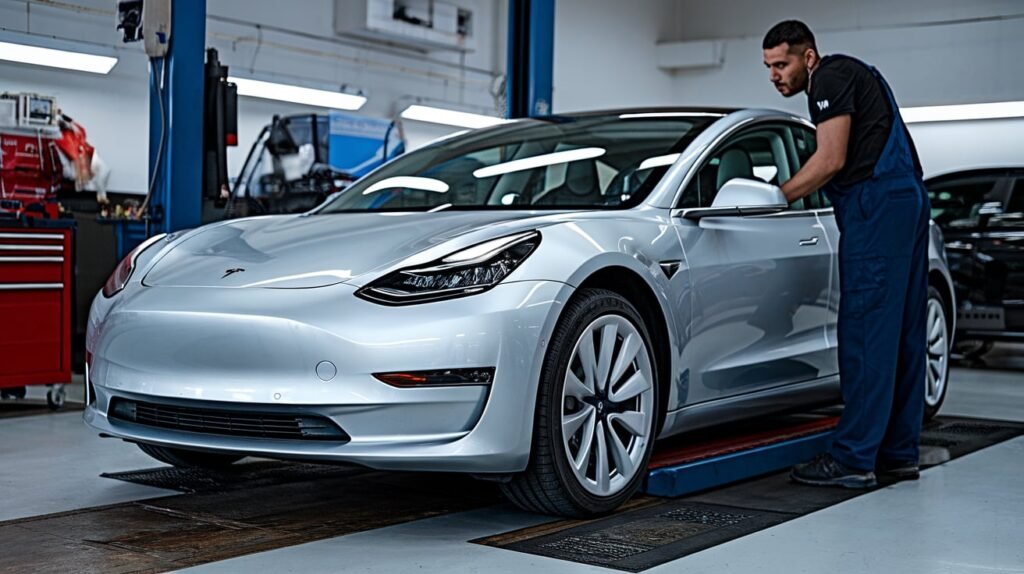
The Power of a Thorough Used Car Inspection
Let’s be honest. Most people think a used car inspection means kicking the tires and checking if the AC works. That’s not inspection, that’s guessing.
A real used car inspection goes deep. It is not just about what you see—it is about what the car has been through. And in Dubai’s auction scene, where vehicles often arrive with patchy histories, you need more than a flashlight and a gut feeling. Here’s what a proper inspection should include:
- VIN decoding: Every car has a Vehicle Identification Number. Decode it, and you get the car’s birth certificate. You’ll know where it was built, what it was built with, and whether that VIN matches the title. If it doesn’t? Walk away.
- Title history checks: Use platforms like Carfax, AutoCheck, or NMVTIS. These tools reveal if the car was ever branded as salvage, rebuilt, or flood-damaged—even if the title looks clean now.
- Service record matching: Look at mileage and repair timelines. If a car shows 40,000 miles but had a transmission replaced at 120,000 miles? Something’s off. Either the odometer was rolled back, or the records are fake.
- Ownership and accident history: How many owners? Was it a fleet vehicle? Any major accidents? These details affect resale value, performance, and safety. You do not want to discover a bent frame after you’ve paid.
A proper inspection connects the dots. It is not just about checking parts, it is about verifying the story. And if the story doesn’t add up, the car isn’t worth it. That’s why smart buyers trust Inspector.ae before making a purchase.
Physical Inspection Techniques That Reveal the Truth
Paperwork can lie. So can photos. But the body never does, if you know where to look. A proper used car inspection is not just about scanning documents. It is about getting hands-on, reading the car like a crime scene. Every panel, weld, and tire tells a story. And if you’re buying from an auction in Dubai, where cosmetic masking is common, you need to read that story carefully. Here’s what to check:
- Panel alignment and symmetry: Look at the gaps between doors, fenders, and the hood. Are they even? Misaligned panels often mean the car was in a collision and poorly repaired. A flashlight and a keen eye can reveal more than any auction listing.
- Paint thickness testing: Use a paint depth gauge. Factory paint has a consistent thickness. If one panel reads 80 microns and the next reads 300? That panel was repainted, possibly to hide bodywork or rust. This is a key part of any serious used car inspection.
- Frame integrity and welds: Crawl under the car. Look for fresh welds, uneven joints, or signs of frame straightening. If the welds look rushed or inconsistent, the car may have suffered structural damage. And in Dubai’s heat, rust spreads fast if repairs are not done right.
- Tire wear and suspension geometry: Uneven tire wear can mean misaligned suspension or bent control arms. Measure tread depth across all four tires. If one side is bald and the other looks new, something’s off. A thorough used car inspection always includes suspension checks.
- Signs of flood damage or sand intrusion: Dubai’s climate brings its risks. Check under carpets, inside door panels, and around the trunk for sand, rust, or water stains. These are signs the car might have been submerged or parked somewhere it shouldn’t have been.
A real used car inspection is physical, not passive. You need tools, time, and a mindset that questions everything. Because once you own the car, the problems are yours. Next, let’s talk about the digital tools that make inspections smarter and faster.
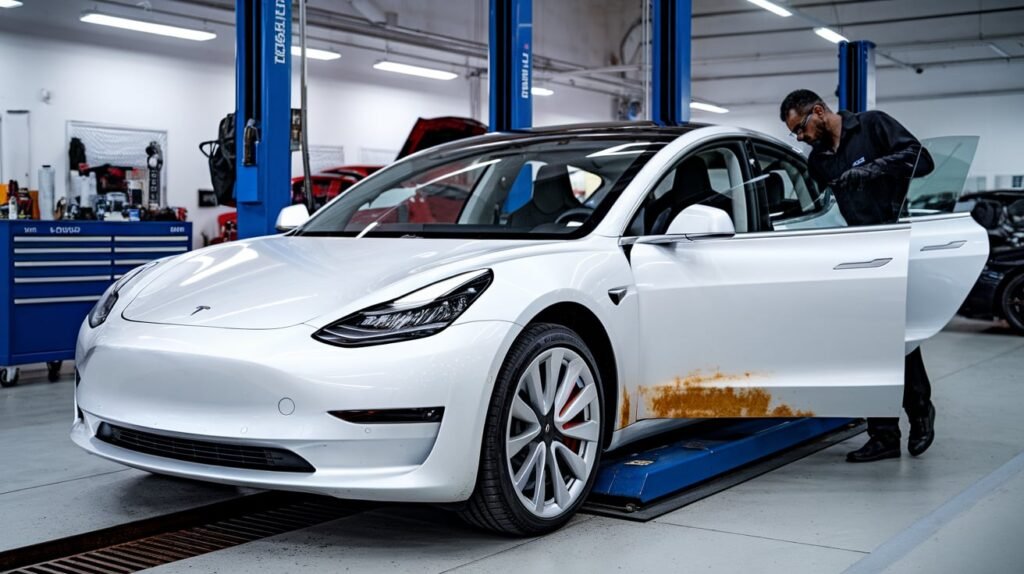
Digital Tools That Strengthen Used Car Inspection Accuracy
Sometimes, the truth is buried deep in the car’s brain, not its body. And if you’re relying only on visual checks, you’re missing half the story. Modern used car inspection is not just about what you can see. It is about what the car’s systems are silently storing. Fault codes, mileage logs, sensor data they all paint a picture that sellers cannot easily fake. Here’s how to dig deeper:
- ECU data readers: The Engine Control Unit stores mileage, fault codes, and performance logs. Plug in a reader, and you’ll know if the car’s real mileage matches the dashboard. If the ECU says 110,000 miles and the odometer says 60,000? That’s rollback. A proper used car inspection always includes ECU access.
- Underbody cameras: Rust, leaks, and frame damage often hide where you cannot see. A small inspection camera can slide into tight spaces inside rocker panels, behind bumpers, and under the chassis. Especially useful in Dubai, where sand and humidity accelerate corrosion.
- OBD-II scanners and diagnostic software: These tools read live data from the car’s systems. You’ll catch misfires, transmission faults, and sensor failures before they become expensive repairs. No serious used car inspection skips this step.
- AI-powered inspection apps: Some platforms now use machine learning to analyze photos, detect anomalies, and flag inconsistencies in service records. Combine that with cloud-based reporting, and you’ve got a full digital trail. For dealership scouts in Dubai, this is becoming standard.
A smart used car inspection blends physical checks with digital diagnostics. Because when the car’s systems tell a different story than the seller, you need to listen to the machine—not the pitch. Next, let’s look at how to spot red flags in repair history and documentation.
Used Car Inspection| Red Flags in Repair History
When the paperwork doesn’t add up, the car probably won’t either. Use this checklist to spot trouble before it hits your wallet.
Documentation Red Flags
- ☐ Mismatched Part Codes: Compare part numbers on invoices with OEM specs. If they don’t match, it’s likely a cheap replacement. A thorough used car inspection should verify every part.
- ☐ Gaps in Service Records: Long stretches with no maintenance? That’s not just neglect—it’s a sign of tampering. A proper used car inspection will flag missing intervals and suspicious mileage jumps.
- ☐ Vague or Missing Repair Details: “General service” or “minor fix” tells you nothing. Look for itemized work. If it’s not there, assume it wasn’t done. A smart used car inspection digs deeper than surface-level summaries.
- ☐ Cosmetic Work Without Documentation: Fresh paint, new upholstery, or replaced trim—without matching invoices? That’s a rushed flip job. A detailed used car inspection checks for hidden damage behind the shine.
- ☐ Untraceable Garages or Handwritten Invoices: If the repair shop can’t be found online or the invoice looks homemade, the history might be fake. Always verify the source.
Pro Tip: In Dubai’s high-turnover car market, a clean-looking vehicle with a messy paper trail is often a trap. Let the documentation tell the real story, or walk away. Fresh paint or vague invoices might hide structural repairs. But beyond condition, you also need to consider regulations, our guide on Car Inspection Laws in UAE explains what authorities look for.
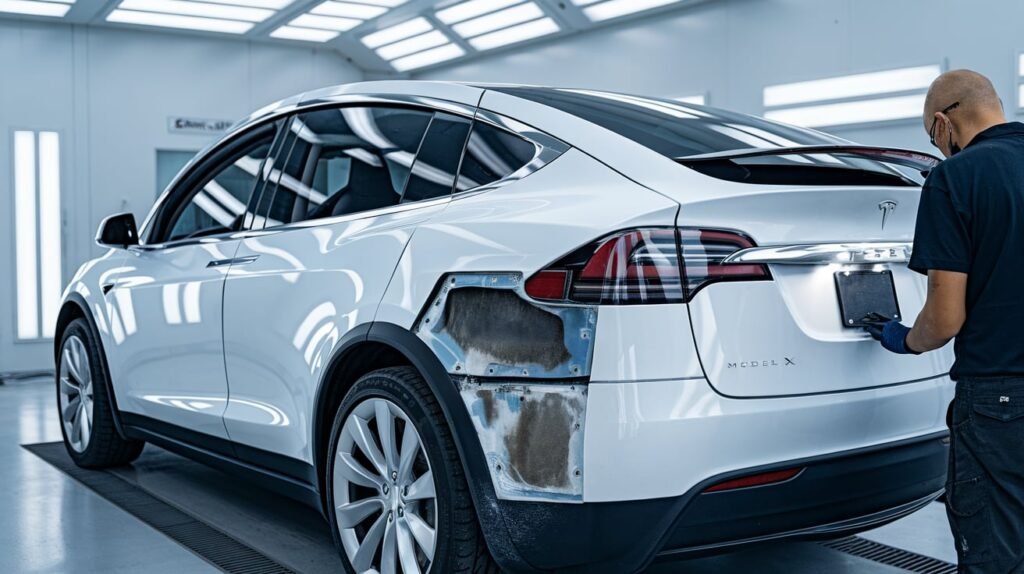
Common Auction Scams vs. How to Outsmart Them
In Dubai’s fast-moving auction market, the real danger isn’t what you see, it’s what’s been expertly hidden. From rebranded wrecks to cloned VINs, sellers rely on speed and surface polish to push problem cars onto unsuspecting buyers. If you’re not armed with a forensic-level used car inspection, you’re walking into a trap. Here’s how the most common scams work—and how to beat them:
| Auction Scam | How to Outsmart It |
| Cross-border registration flips<br>Cars imported from high-salt regions or flood zones, then re-registered locally to hide their origin. | Check the registration trail. A proper used car inspection includes chassis corrosion checks and import history verification. |
| Rebranded salvage titles<br>“Rebuilt,” “refurbished,” or “reconditioned” often means the car was totaled and patched up. | Decode the title. Ask for the original salvage report. A smart used car inspection will reveal structural damage beneath cosmetic repairs. |
| Cosmetic masking<br>Fresh paint, new upholstery, and polished trims—but no record of accident repair. | Look beyond the shine. Use paint thickness gauges and interior panel checks. A detailed used car inspection exposes hidden damage. |
| Fake service histories or cloned VINs<br>Forged invoices and duplicate VINs used to create a false sense of reliability. | Verify VINs across multiple databases. Match service records to mileage and timestamps. A thorough used car inspection always includes VIN authentication. |
If it looks too clean for its age or price, it probably is. Auction scams thrive on surface-level trust. Your defense? A relentless, detail-driven used car inspection. Cosmetic masking and fake histories lure buyers into overpaying. Before bidding, understand what inspection really costs, check our breakdown on Car Inspection Cost in Dubai.
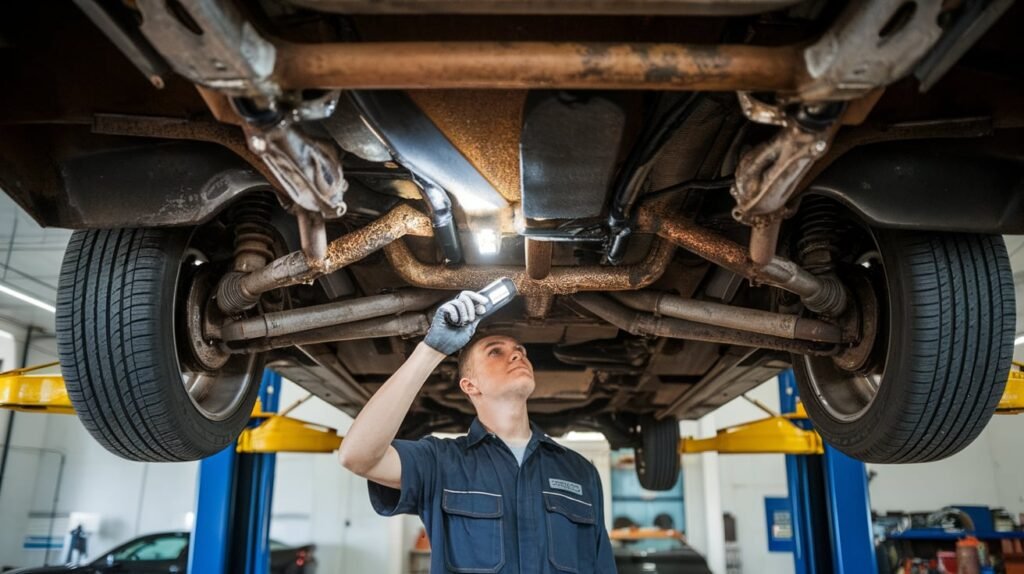
Best Practices for Inspection Pros and Auction Buyers
In Dubai’s auction lanes, speed sells and mistakes cost. Whether you’re flipping inventory or buying for personal use, your edge comes from preparation, precision, and a no-compromise approach to inspection. Here’s how to stay ahead of the curve:
1. Always Conduct a Multi-Point Used Car Inspection
Never rely on surface impressions. A multi-point used car inspection should cover mechanical systems, body integrity, electronics, and VIN verification. If it’s not thorough, it’s not worth trusting.
2. Use Third-Party Inspection Services for Online Auctions
Remote bidding is risky. Partner with independent inspectors who specialize in auction vehicles. A professional used car inspection done on-site can save you from buying a polished disaster.
3. Ask for Pre-Auction Inspection Reports—and Verify Them
Many sellers offer inspection reports. Don’t take them at face value. Cross-check the findings with your own checklist or a trusted inspector. A real used car inspection doesn’t skip the hard questions.
4. Attend Auctions with a Checklist and Tools
Bring a flashlight, paint gauge, OBD scanner, and tire tread depth tool. Your checklist should include signs of flood damage, repainting, and frame misalignment. A hands-on used car inspection is your first line of defense.
5. Collaborate with Certified Inspectors for High-Value Purchases
For luxury or performance vehicles, hire certified professionals. Their expertise in diagnostics and repair history analysis can reveal what others miss. A high-level used car inspection is an investment—not a cost.
Never rely on surface impressions. A multi-point inspection should cover mechanical systems, body integrity, and VIN verification. Our Pre-Purchase Car Inspection in Dubai service ensures you catch hidden damage before buying.
Stay Sharp, Stay Protected
In Dubai’s auction market, every car has a story. Some are honest. Most are edited. That’s why a used car inspection isn’t just a step, it’s your shield. It’s the difference between buying a reliable ride and inheriting someone else’s problems. You’ve seen the red flags. You’ve learned the scams. You know the tools. Now trust your instincts. Trust your checklist. Trust the process. Because when the paint is fresh, the paperwork is vague, and the price feels too good, your inspection is the only truth you’ve got.

